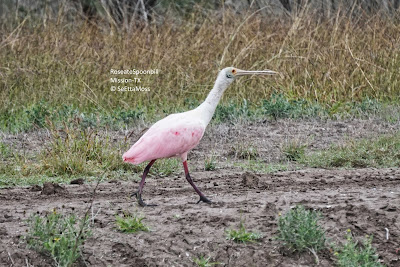I found this Roseate Spoonbill walking along a canal at the Mission Nature Park. "Like many other bird species with beautiful plumage, roseate spoonbills were nearly hunted to extinction during the 1800s. Their striking pink feathers were popular on women's hats, and hunters from all over the United States competed for spoonbill plumes. In the early 1900s, roseate spoonbills began to recolonize areas along the Gulf Coast and slowly increase in number. Today, threats to roseate spoonbill populations come as a result of habitat loss." (from Texas Parks and Wildlife website) SeEtta



